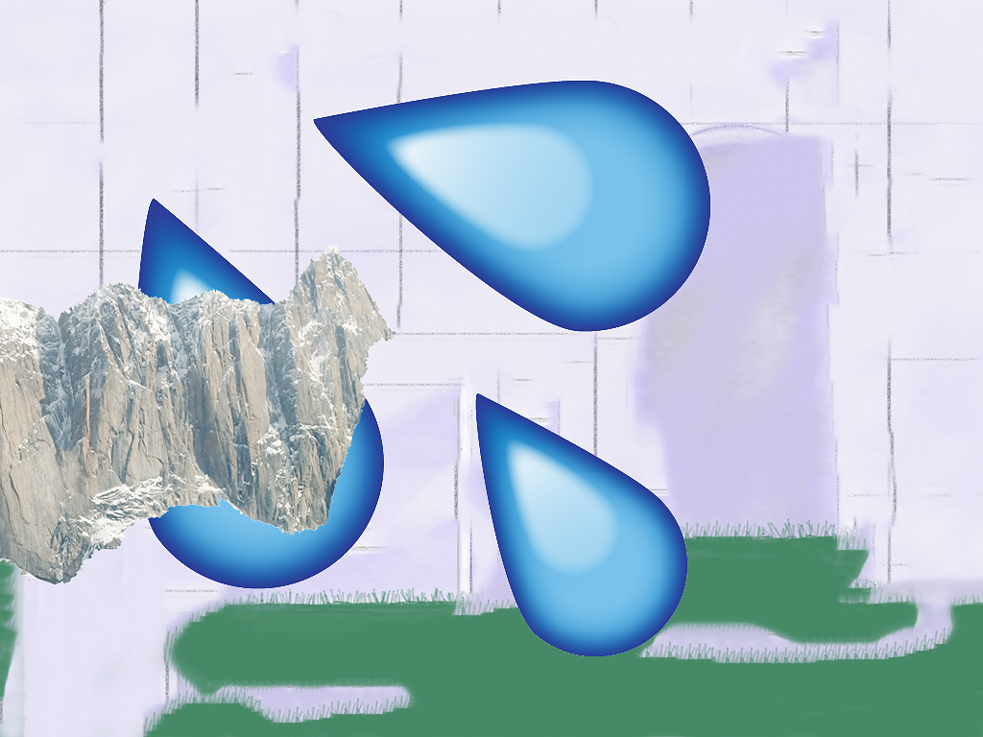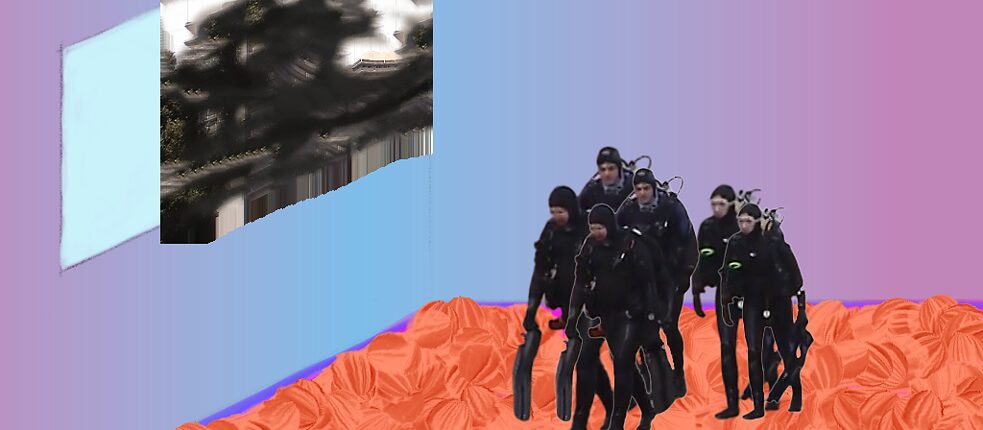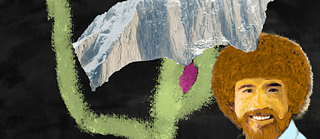Wet-on-wet
Two Fires in One Hearth
Imagine it’s the 1980s, and you’re living in California, perhaps. You’re a kindergarten teacher. You’re sitting at home having breakfast, reading your paper, and as you work your way toward the sports or culture pages – whichever floats your particular boat – you happen to read an article about the new theory of global warming.
What is that all about? You are gripped by a feeling of horror: global warming. The oceans are getting warmer? The oceans are becoming acidic? What’s that supposed to mean? In fifty years? 2030? Death? Cars? Biodiversity? What do you do now? Where do you go?
1 – Wet-on-wet
You switch on the TV. You flick through the channels looking for PBS and hope to find a documentary on the very subject. That’s the kind of synchronicity you could really use right now. You find PBS but they are not showing a documentary about global warming; instead, you see Bob Ross and his smiling face as he uses a palette knife to stir some paint that he describes as dusty rose. You could head to the library, you think to yourself. Bob Ross is talking quietly. Or to a bookstore, perhaps. Bob Ross, one finger missing from his palette hand, daubs dusty rose onto a canvas. Why is he missing a finger? Bob Ross is painting an unspoiled landscape: trees, meadows, no animals. An idealized image of nature, a fall landscape, an idyll untouched by human hands, a river. You have to go to work. You play with the children, teaching them at the same time. You take some acrylic paints home with you from the kindergarten. You paint the Bob Ross picture from memory. But because that was already in the past, and like everyone else you have such a bad memory, your picture looks quite different. But you like it anyway. You find it calming. You paint six new pictures over the next few days and send them to the Yale School of Art. You are admitted. You receive a scholarship. You know nothing about Connecticut. You move to Connecticut. You paint. The international art market praises your unique use of the wet-on-wet technique to depict a natural environment that has been executed by humans, a grieving, indeed weeping landscape – as if nature were appealing to humans, begging them – and pays tribute to your early discovery of the climate catastrophe in painting. You are interviewed about global warming. You fly all over the world. Now it is 1995. Drops - Digital Painting by T.Olbrich
| © T.Olbrich
Drops - Digital Painting by T.Olbrich
| © T.Olbrich
2 – Serendipity
Imagine it’s the 2020s, and you’re living in Berlin, perhaps. But that’s not important. Wherever you wish. You are a kindergarten teacher. You’re lying around at home and watching the YouTube videos of an American design student who paints Bob Ross-style pictures. She says that Bob Ross was a pioneer of ASMR. You put on Erik Satie and read the Wikipedia entry for wet-on-wet painting. A link to the Netherlands takes you to Brussels, and a link to Jade Emperor takes you to China and to the article on I Ching, the Book of Changes. You read that the book presents a system of 64 hexagrams to which certain characteristics are ascribed. You also read that there is an additional section that was later expanded continuously in which these characteristics are interpreted, with the result that the book is considered to be a central work of early Chinese wisdom. You read that Leibniz applied for admission to the Royal Society in 1662, submitting a silent yet seminal revolution. Inspired by the duality principle of Yin and Yang in I Ching, he decided to base his machine on a binary system, the dyadic system. You read that 64 hexagrams of solid and broken lines each have a specific meaning in I Ching. Any moment can be symbolized in a unique ideogram. You read I Ching online. You read about time as a means of realizing that which is possible. You begin to study Taoism. You read the following in the sample of a self-help guide: a huge part of Taoism is serendipity. Take time, relax, and just explore and poke around. You sit on a chair. You relax and explore your home. You think about a sand dune. But what you see is the wind. You feel the wind behind the cinema. You think to yourself: I am standing on the shore of an ocean of information like a child, and I am dipping my toe into the water. Will I be able to swim in it? What would it be like to be made wet by it? Just a few minutes have passed. Suddenly, you realize that you have never before been so happy. Serendipity 1 - Digital Painting by T.Olbrich (Crop)
| © T.Olbrich
Serendipity 1 - Digital Painting by T.Olbrich (Crop)
| © T.Olbrich
This article was commissioned and created in collaboration with Das Wetter - Magazin für Text und Musik.



